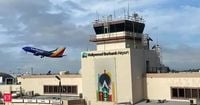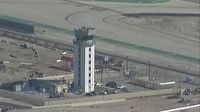On October 6, 2025, Hollywood Burbank Airport found itself in the national spotlight for all the wrong reasons. For nearly six hours, from 4:15 p.m. to 10:00 p.m., the airport's control tower stood eerily empty, a direct consequence of a deepening government shutdown that has begun to ripple through every corner of American life. While flights continued to operate, the absence of air traffic controllers in the tower marked an unprecedented disruption for one of Southern California’s busiest regional airports.
According to The Economic Times, the Federal Aviation Administration (FAA) quickly stepped in, assigning Southern California TRACON, an air traffic approach and departure team based in San Diego, to manage Burbank’s airspace remotely. TRACON, which already guides about 2.2 million planes annually across the region, became the linchpin that kept operations running—albeit with significant delays. Pilots landing at and departing from Burbank were forced to rely on procedures typically reserved for smaller, uncontrolled airports, coordinating directly with each other to ensure safety in the air and on the ground.
The cause? A perfect storm of staffing shortages and political gridlock. The government shutdown, which began on September 30 after lawmakers failed to pass a funding bill by the October 1 deadline, has left thousands of federal employees in limbo. As ABC7 Los Angeles reported, about 13,200 air traffic controllers and more than 61,000 Transportation Security Administration (TSA) employees have been required to remain on the job—without pay. Many, understandably, have started calling in sick, leading to critical shortages not only at Burbank, but also at major airports like Denver, Newark, Phoenix, Jacksonville, Washington D.C., and Indianapolis.
At Burbank alone, more than 80 flights faced delays or cancellations during the unmanned period, with some delays stretching to nearly four hours. The airport’s social media team did their best to keep travelers informed, urging passengers to check with their airlines before heading to the airport. Operations returned to normal by Tuesday morning, but the episode left a lasting impression on weary travelers and an industry already stretched thin.
California Governor Gavin Newsom didn’t mince words when assigning blame. “Burbank has ZERO air traffic controllers from 4:15pm to 10pm today because of YOUR government shutdown,” he tweeted, squarely pointing the finger at President Donald J. Trump. Newsom’s frustration was echoed by many officials and union representatives, who argue that the shutdown is “introducing unnecessary distractions” and weakening the entire aviation system. Nick Daniels, President of the National Air Traffic Controllers Association, stated on October 1, “Congress must act now to end this shutdown. When the federal government shuts down it introduces unnecessary distractions and our entire aviation system is weakened. Congress must restore federal funding so that the safety and efficiency of our National Airspace System is not compromised.”
Behind the scenes, the crisis has been brewing for years. Aviation consultant Mike McCarron, speaking to ABC7 Los Angeles, explained that the industry faces persistent staffing shortages due to the lengthy training process. “It takes about five months to complete the academy training. And then it takes anywhere from two to four years to become completely qualified as a controller. So there’s a huge lag time,” McCarron said. The shutdown has only made matters worse, with essential workers now being pushed to their limits—many working 10-hour shifts, six days a week, without a paycheck.
The union representing air traffic controllers highlighted the extraordinary dedication of its members, stating, “Nearly 11,000 fully certified controllers remain on the job, many working 10-hour shifts as many as six days a week, showing extraordinary dedication to safely guiding millions of passengers to their destinations—all without getting paid during this shutdown.” But even the most committed professionals have limits. As the days without paychecks stretch on, absenteeism rises, and the system becomes more brittle. Jeffrey Price, a professor of aviation at Metropolitan State University of Denver, warned, “The system does become a little bit more brittle, and the longer this goes, the more the traveler is going to notice it.”
The impact was not limited to Burbank. According to The Economic Times, airports across the country are feeling the strain, with some reporting air traffic staffing down by as much as 50%. In 2018 and 2019, a similar government shutdown led to Miami International Airport temporarily closing one of its terminals as TSA officers called in sick at double the usual rate. This time, the FAA has already begun slowing down landings and takeoffs at affected airports to ensure safety, which inevitably leads to more delays and cancellations.
Secretary of Transportation Sean Duffy addressed the issue at a press conference at Newark Liberty International Airport, confirming that his department is closely tracking sick leave. “Have we had a slight tick up in sick calls? Yes. And then you’ll see delays that come from that, right? Because again, our priority, again, I want to see your flight not be delayed. I don’t want you canceled, but our priorities are safety. So if we have additional sick calls, we will reduce the flow consistent with a rate that’s safe for the American people.”
For travelers, the message is clear: expect delays, arrive early, and prepare for cancellations. Airlines are advising passengers to check their flight status frequently and to have backup plans in place, whether that means booking hotels, considering alternate flights, or simply building flexibility into their schedules. The TSA is also warning of longer lines at security checkpoints due to ongoing staffing shortages.
The broader implications for the aviation industry—and for the American public—are sobering. Airlines face mounting costs from delays and rescheduling, and the long-term effects could include backlogs at airports even after the shutdown ends. Federal authorities are working hard to minimize lasting disruptions, but the situation has exposed just how vulnerable the nation’s air travel infrastructure is to political stalemate.
As the shutdown continues with no resolution in sight, travelers, airport officials, and industry experts alike are left hoping for swift action from Washington. Until then, patience and vigilance remain the traveler’s best companions in the sky.


